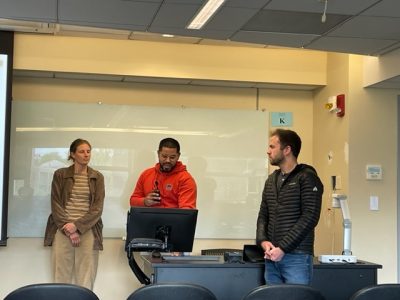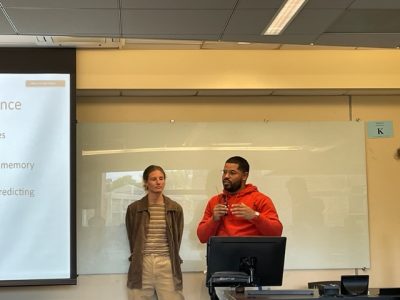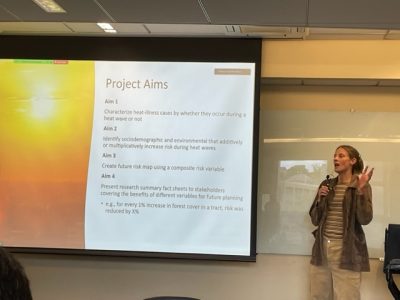Identifying the Local Factors that Increase Health Risks During Heatwave Events
Peter Billman, Erin Dierickx, Josué Martínez-Martínez
OBJECTIVES
Contemporary climate change is intensifying, leading to increased frequency, intensity, and duration of weather extremes such as heat waves. While most studies on the human health impacts of past heat waves have focused on major metropolitan cities like Chicago and New York City, rural areas, which may be equally vulnerable, have received far less attention. Additionally, the majority of studies have concentrated solely on heat-related mortality, neglecting non-lethal events.
METHODS
To address these knowledge gaps, we are investigating the effects of high temperatures and humidity on residents of Connecticut, a state characterized by strong rural-urban gradients and a large population. By utilizing fine-scale weather, land cover, and patient demographic data, we are employing a case-only approach to analyze approximately 6,000 hospitalization records of heat-related illnesses between 2011 and 2022. Evaluating both intrinsic and extrinsic modifiers associated with these hospitalizations can provide insights into the mechanisms that disproportionately put certain areas and groups at higher risk during heatwave events. Subsequently, we will use these insights to map future risk levels at the census-tract scale across the state.
PROGRESS
The primary objective of this work is to leverage empirical data from the recent past to identify areas of highest vulnerability moving forward. Our findings will help inform local emergency planning efforts aimed at preventing heat-related deaths as well as identifying locations and populations that would benefit most from interventions such as planting shade trees or opening cooling centers, among other climate-smart initiatives.
- We are in discussions with the the CT Department of Public Health to disseminate findings to relevant stakeholders
- All necessary data has been received and we are in the process of conducting analyses
- Findings will be presented at the NACSETAC (North Atlantic Region Society of Environmental Toxicology and Chemistry) annual meeting




